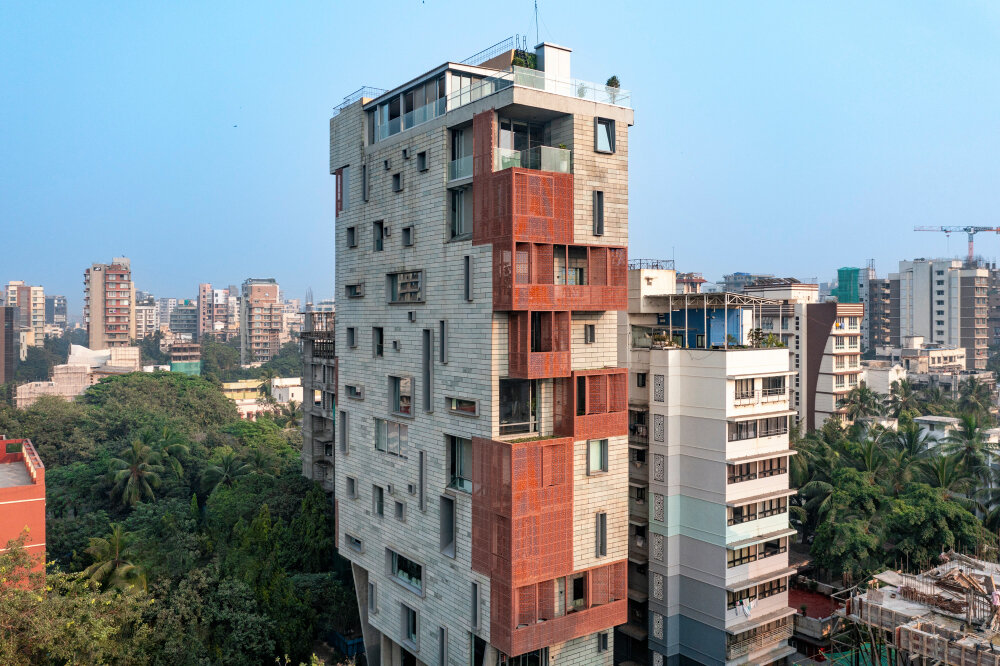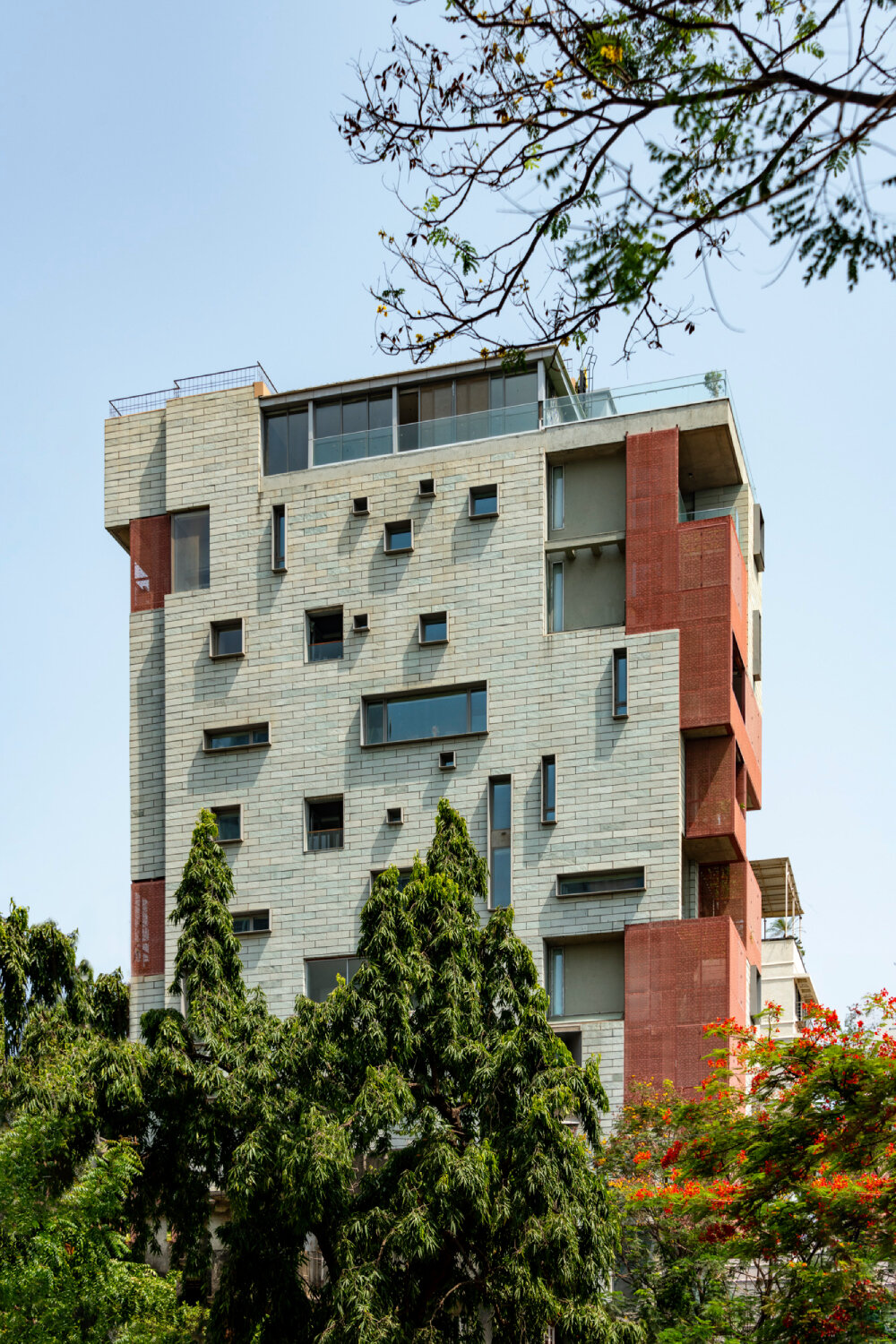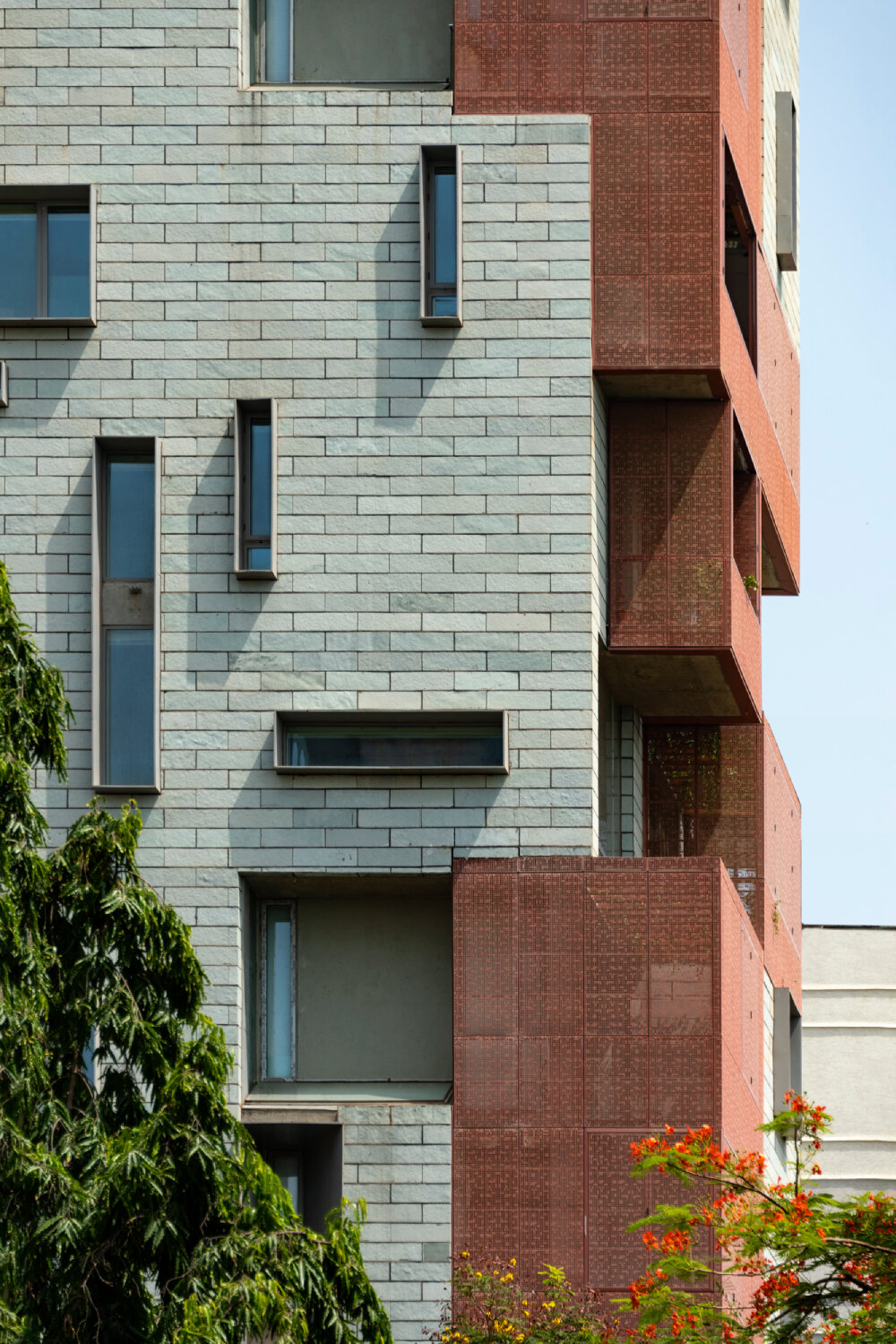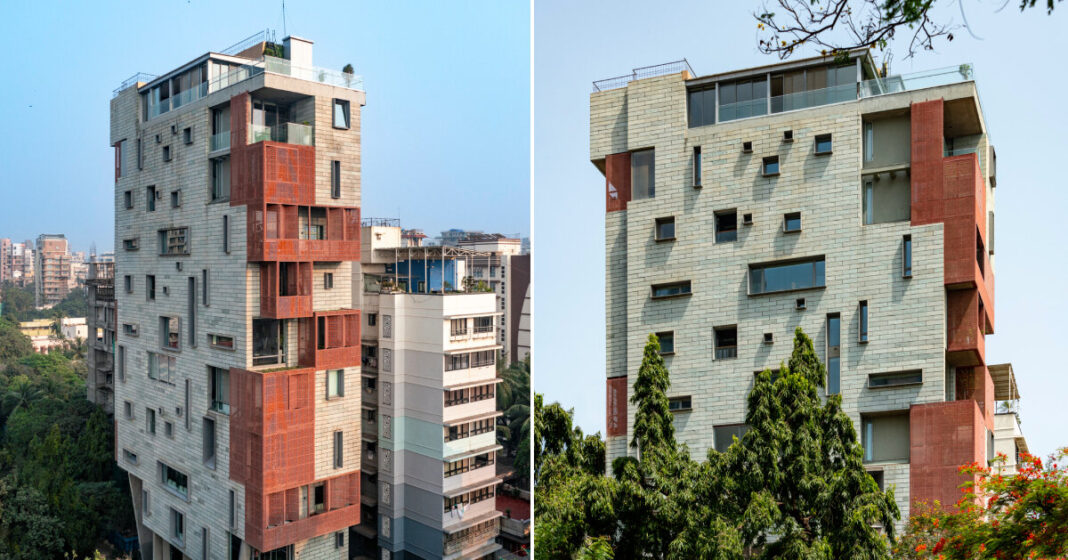malik architecture completes j-house in mumbai
As Mumbai’s Khar neighborhood continues to rapidly densify, with low-rise homes giving way to high-rise towers, Malik Architecture’s J-House attempts to reconcile high-rise living with the spatial and climatic adaptability of vernacular architecture. With the towering residential structure, the Indian practice sought to address contemporary urban housing challenges such as the loss of human-scale interaction and greenery, and a disconnect between developments and the street, with indigenous spatial strategies.
As a response, the structure is one that mediates height and ground, public and private, marked by a geometric facade that reestablishes porosity with the neighborhood and an indoor-outdoor connection for all individual units. Each home, reinterpreting the traditional bungalow, features a courtyard, verandah, and perforated jaali screens — all vernacular strategies that promote climate responsiveness and enhance spatial connectivity within — that extend outward to shape a geometric, layered facade.
all images by Bharath Ramamrutham
the residential tower maintains porosity with the neighborhood
Khar was once a once-leafy neighborhood with low-rise homes set back from the streetfront and shaded behind front gardens. Now, amid urbanization and increasing demands for floor space, the neighborhood seen an increase in the development of residential towers that continue to eliminate any manner of dialogue with the street. As a result, individual units too face a disconnect with the outdoors, receiving limited access to natural light and ventilation. Podium parking at ground level in particular has replaced the nuanced spatial relationships of traditional homes and their urban context, which J-House presents a counterpoint to.
Malik Architecture’s concept begins with eschewing the typical high-rise template to restore a degree of porosity at the street level and establish a more inviting urban frontage. The design team has replaced street-level parking with a landscaped entry sequence defined by water, trees, and shaded setbacks that initiate a more organic first point of mediation. Parking, meanwhile, is moved underground. Throughout the rest of the design concept, the project continues to take cues from three key elements of indigenous architecture: the courtyard, the verandah, and the jaali.

Malik Architecture completes J-House
vernacular strategies define the urban high-rise
The residences within are structured around central north-facing courtyards which flood interiors with natural ventilation and allow for a spatial organization that fosters openness without compromising privacy. As they bind the internal spaces together, the courtyards also work together with programmatic shifts to create a network of deep voids and skylights moving further into the residences. The western edge, facing the Arabian Sea, features a series of deep, shaded verandahs with fixed and operable jaali screens that offer a buffer against the harsh sun and monsoon rains.
J-House’s composition also challenges the conventional stratification of high-rises, where floors function as isolated layers. Instead, Malik Architecture introduces volumetric shifts that reinterpret the traditional bungalow within these vertical confines through layered verandahs, staggered voids, and interwoven spaces. These elements together evoke the spatial fluidity of the traditional joint-family home prevalent across India.

located in Mumbai’s Khar neighborhood

the towering residential structure seeks to address contemporary urban housing challenges

